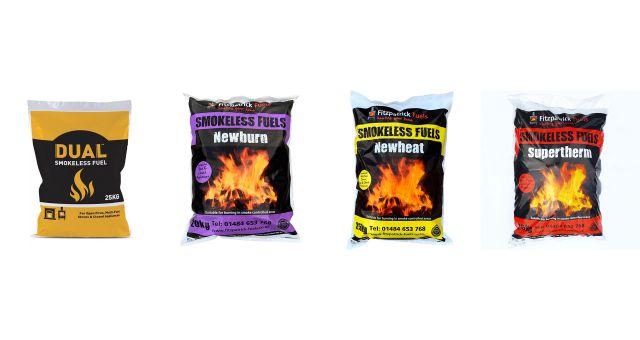Why should you use firewood as your main source of heating in your home? Is it efficient? What are the pros & cons? How do I get the most out of my wood or multi-fuel stove?
Pros to using firewood:
- More ecofriendly than people think – Following the government research into energy and climate change in 2020 it was found that Kiln Dried wood produces 0.015kg of CO2 per kWh of heat. This is on average lower than that of electricity and gas.
- Efficiency – Log burners and Multi-fuel stoves operate at an average of 80% efficiency. This means a large volume of the energy stored in the logs you burn are converted into heat. Open fires aren’t as efficient in regard to firewood, converting just 20% of energy into heat on average, so coal is a better fuel for an open fire.
- Cost is subjective – How much you spend on your firewood is totally up to you. Depending on how often you light your fire and whether you prefer to buy in bulk can have an impact upon how much you upfront cost is for purchasing your logs.
Cons to using firewood:
- Storage – To fuel your fire you need to store the fuel. Space needed varies on the fuel you are using but firewood can take up a fair amount of space if you buy in bulk. If space is an issue you could give Briquettes a go. They are usually wood based so have the same impact as logs but take up less space.
- Preparation & Maintenance – Stoves need a little bit of TLC every now and then, cleaning out ash build up keeps on top of a healthy fire. Having the chimney swept annually will help keep your stove in top shape.
- Upfront cost of fitting a stove – This doesn’t apply to everyone as most people will be reading this due to already having a stove in their house but if you are thinking of having one fitted the upfront cost of buying and installing a stove can be a bit expensive but the cost balances itself off in the long run.
How to get an efficient wood burn:
Step 1 – Choose the right type of wood.
The type of wood you use on your stove can affect the type of burn you will get. Head on over to our “Wood and Density Guide” to see what type of wood will work best for you.
Step 2 – Choose your firestarters
To get your fire going you want to use smaller cuts of wood known as kindling and firelighters. The firelighters provide a short burst of high flame (approx 10-15 minutes) to help light the kindling which then burns and helps light the firewood.
Step 3 – Lighting method.
There’s different ways you can light your fire, it totally is your personal choice of how you light your fire.
Some like to use the “Top Down” Method – This is where you place your firewood on the base of your stove, the kindling is then placed on top in either a pyramid shape or a grid shape. A Firelighter is then placed in the middle of the kindling, another firelighter is placed on top and lit.
Others prefer the “Traditional” Method – This is where you place your firelighters on the base of the fireplace. Layer kindling over the top, leaving gaps in between pieces for airflow. If you have enough space you may choose to put 2 smaller logs either side of the kindling. Once the kindling is well lit, place your firewood over the kindling.
Step 4 – Regular maintenance
As mentioned above, stoves need regular maintenance for them to be used at their full potential. By carrying out regular maintenance it helps keep your stove healthy and producing good fires, but it also helps you to keep an eye out for any damage or faults. Finding faults and damage at the earliest stages is better than it being left and developing into a larger, more costly issue.
Step 5 – Keep the chimney clean
The last thing to keep your stove up to scratch is keeping your chimney clean. We recommend having it swept once a year, particularly before a heavy-burning period. An unswept chimney is a hazard too, any creosote or debris build up caused by burning can be dangerous in the long run.




